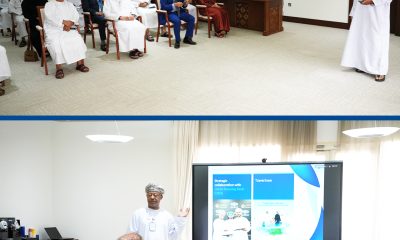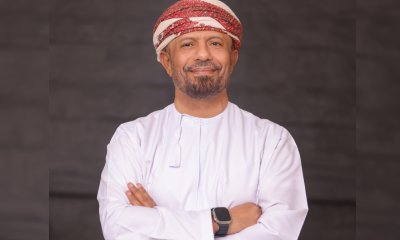Economy
HSBC hosts 18th Middle East economist roadshow in Oman
More than 55 people gathered in Muscat for HSBC’s 18th Middle East Economist Roadshow. The event, held at the Al Bustan Palace, saw David Bloom, Global Head of Foreign Exchange Strategy, and Simon Williams, Chief Economist, CEEMEA, discuss the most important global and regional trends shaping the Middle East’s economies.

More than 55 people gathered in Muscat for HSBC’s 18th Middle East Economist Roadshow. The event, held at the Al Bustan Palace, saw David Bloom, Global Head of Foreign Exchange Strategy, and Simon Williams, Chief Economist, CEEMEA, discuss the most important global and regional trends shaping the Middle East’s economies. Each year, the roadshow visits Abu Dhabi, Dubai and Riyadh, before making stops in Qatar, Kuwait and Oman.
Simon Williams said, “The balance sheets of the Middle East oil producers are strong enough to absorb the terms of trade shock. However large the deficits may get, they are going to be funded. The dollar pegs are going to hold.
We fear this is not a cyclical dip in oil prices, but a change in cycle. A structural shift. The boom era may be done, more difficult times lie ahead.
While there is no crisis on the horizon, the terms of trade shock is too large to ignore. Deficits approaching half a trillion dollars over 2015-17 mean that spending will be cut, interest rates will rise and growth will slow markedly.
Oman is one of the regional oil exporters that appears particularly exposed to the loss of oil income. Its breakeven oil price is high, and, despite some progress with diversification, the Sultanate remains tied to its energy sector. Oman will make it through, but 2016 will likely prove to be a very difficult year.
David Bloom said, “The start of a Fed tightening cycle will not be US dollar (USD) positive in our view.
Like other countries that have had to quickly reverse their post-crisis rate hikes, the Fed’s cycle will likely be shorter than before. If this is due to low inflation, the USD should fall against both Emerging Market and Developed Market FX.
So far, the ECB has successfully managed to weaken the euro (EUR), but fighting any EUR-USD upside may be more difficult, given that it faces several crucial self-imposed constraints that make a large-scale expansion of the quantitative easing (QE) programme difficult.
We see EUR-USD at 1.20 by year-end 2016. The consensus in markets is for further Bank of Japan (BoJ) easing, given stubbornly low inflation in Japan.
However, we do not share this view, and think that large-scale QE is reaching its limits of effectiveness. This, combined with technical and political difficulties, means we see the BoJ holding off on further easing.
-

 Alamaliktistaad Magazines2 months ago
Alamaliktistaad Magazines2 months agoAlam Al Iktisaad – September 2025 Edition
-

 News2 months ago
News2 months agoKitchenomiKs Secures Investment of US$3.2M Led by Jasoor Ventures
-

 Banking & Finance2 months ago
Banking & Finance2 months agoOman Arab Bank Highlights Its Ongoing Strategic Initiatives and Future Plans
-

 News2 months ago
News2 months agoIEA Expects Global Oil Market to Remain Oversupplied in 2026
-

 Energy2 months ago
Energy2 months agoWLGA Middle East LPG Summit & Expo 2025 to be held at OCEC on November 10 and 11
-

 Real Estate2 months ago
Real Estate2 months agoAl Mouj Muscat Unveils Azura Beach Residences Phase 2: A New Chapter in Waterfront Living
-

 Leaders Speak1 month ago
Leaders Speak1 month agoDhofar International Development and Investment Company: Driving Sustainable Growth and Strategic Synergies in Oman’s Investment Landscape
-

 Events1 month ago
Events1 month agoOER Corporate Excellence Awards 2025 Honours Entities and Innovations in Oman































You must be logged in to post a comment Login